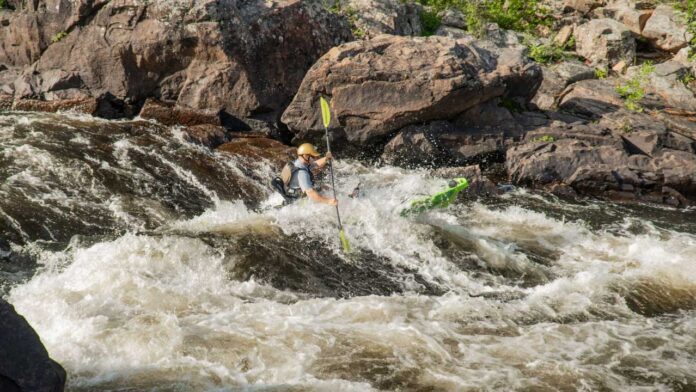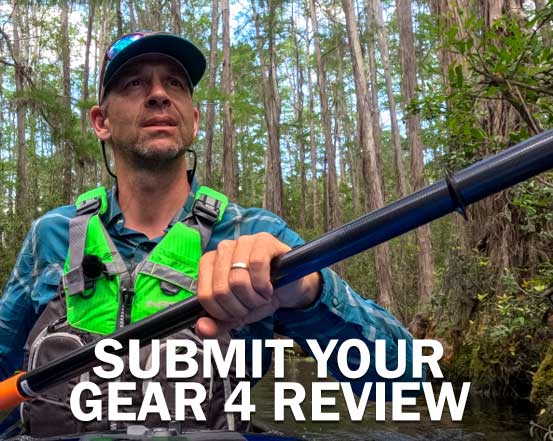Most people who are drawn to kayak fishing rivers tend to be anglers first and paddlers second (or third…or even fourth). Because of this, flowing rivers can present unique challenges that need to be anticipated and prepared for in advance. The right boat and a little bit of know-how can go a long way to enhance your experience and ensure your safety. Here's what I can tell you from my experiences (including my mistakes) over the years.
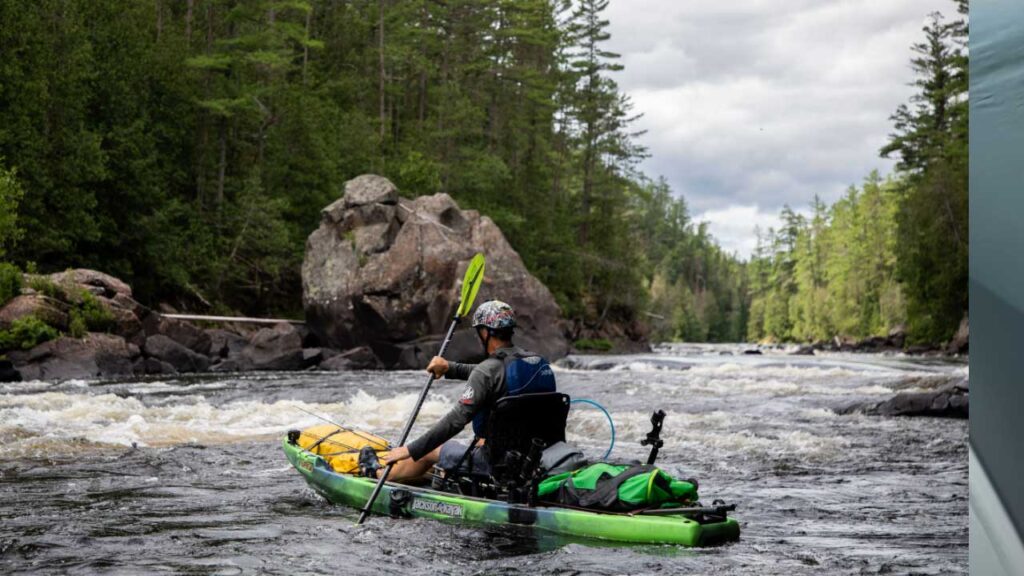
Best kayak for fishing rivers?
A sit-on-top hardshell is an excellent choice, and definitely the way to go for kayak anglers. A sit-on-top inflatable is a good choice if you don't mind sacrificing some performance and are mindful of the maintenance. Sit-inside hardshell kayaks can cut it in modest current, but will swamp if tipped over. If you ‘re looking to really attack the rapids, then nothing beats a whitewater kayak. Whitewater kayaks have spray skirts and these aren't a friendly fishing boat.
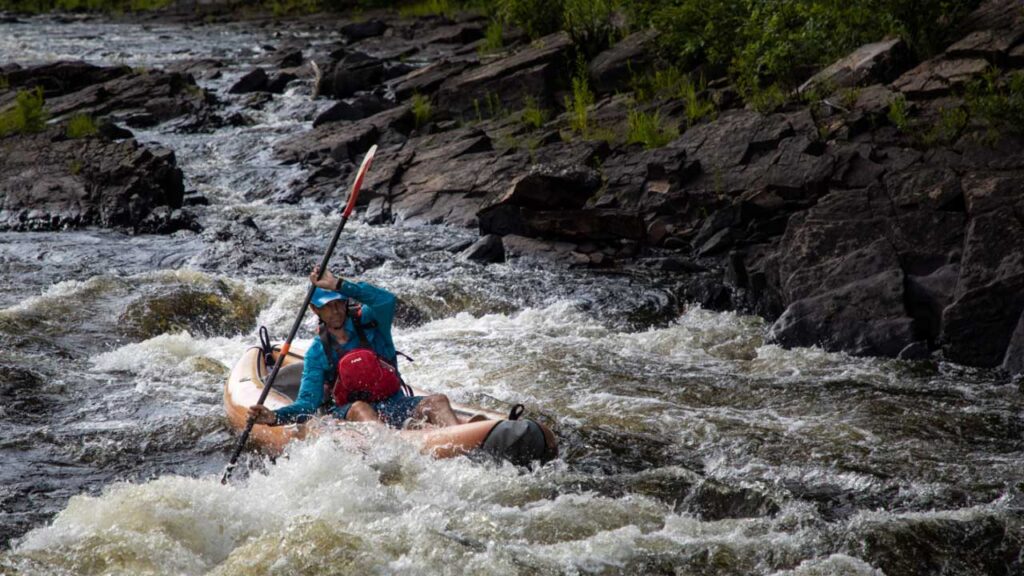
When it comes to fishing on rivers, many people prefer a sit-on-top hardshell kayak. Pedal kayaks have improved leaps and bounds over the years. For current, shallow spots, and rapids a paddle kayak is a great way to go for kayak fishing on rivers.
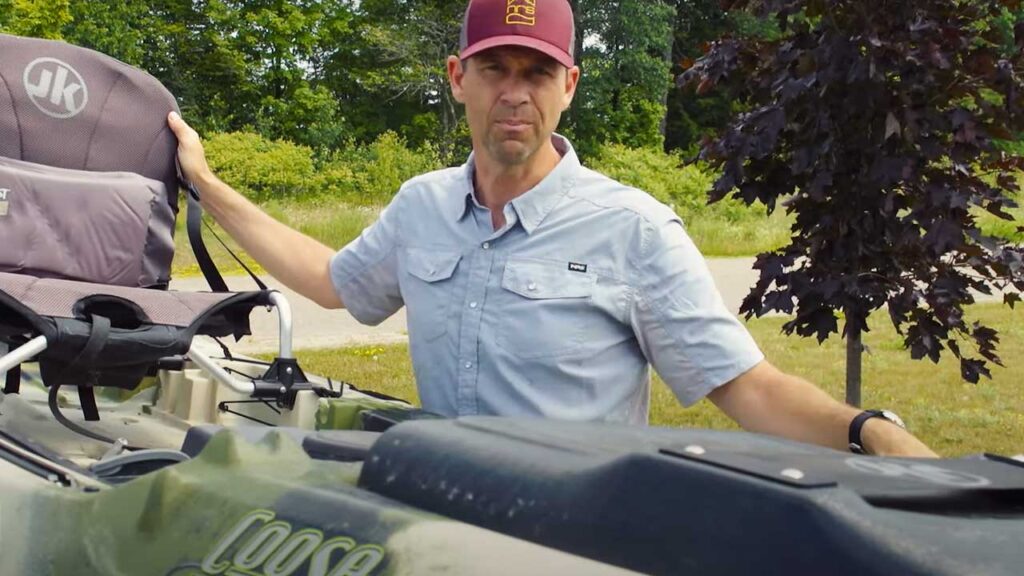
Sitting Position for River Anglers
Quality fishing kayaks typically have seats that can adopt a high or low position. While casting out over calm waters, the high position offers a better vantage point to what lies beneath the surface. However, when you encounter some current, be sure to drop down into the low position, since this is a much more stable setup.

Packing for Kayak Fishing Rivers
Packing for a kayak fishing trip will look quite different for a river run compared to a lake outing. My suggestion is to pack light, or as us river paddlers like to say: “Rig to flip”. Even if you know what you're doing and the river is relatively mild, it is always best to expect to flip. Then when this happens, all of your gear will be properly attached and stowed so that you don't lose anything.
Hard lessons
I learned this lesson the hard way while doing a 3-week paddling trip through the Grand Canyon. After an unexpected capsized raft, we lost all the food for the trip. Everything! So needless to say, that put a bit of a damper on the expedition.
Selective packing
The best way to prevent losing valuable goods is to be more selective with your packing. Bring less rods; bring less tackle. This may mean some tough pre-game decisions. You'll be grateful for the minimal approach not only in terms of mitigating damage, but also for boosting performance. A bogged down kayak will be slower and less responsive across those winding and ever-changing waterways.
How do you handle rocks while paddling rivers?
One of the main concerns kayakers have while paddling rivers is how to handle rocks. At any time, kayakers may find themselves getting pulled into sizeable rocks by the current. This happens more easily while fishing, since the focus tends to be elsewhere. Most people's natural reaction when drifting sideways into a rock is to lean away from it. This is an example of where our instincts mislead us.
Lean into the rock
You'll actually want to lean into the rock. The reason for this is that the current that's pushing into you will gain purchase on the kayak's edge (if you're leaning away from the rock/into the current) and flip the kayak remarkably quick! Conversely, if you lean into the rock/with the direction of flow, this will give the water a path under the boat, which will keep you upright until you're able to slowly push yourself around the rock and get on with your day.
What's the best way to anchor a kayak?
The same principles for navigating rocks on the river apply to anchoring a kayak in current. If you like to drop an anchor while fishing on a river, it's important that you don't have the boat positioned perpendicular to the current. Once again, the force of the flowing water will pile up on the kayak's edge and flip you before you even know what's happening.
Anchoring a kayak
To be perfectly honest, I don't recommend anchoring at all while fishing rivers, but if you are set on doing so, you'll either have to maintain a downstream tilt (which is not easy to do), or drop the anchor from the ends of your kayak so that you're kayak points downstream (but beware that strong enough current will still accumulate and potentially cause problems). Keep in mind that if you want to linger in one spot, you can always beach your kayak and cast out from the shore.

Flowing rivers can be great places to catch fish because they tend to be untapped wells. However, the reason these spots are less visited is because the current, rocks, and rapids can be difficult to manage, especially while trying to split your attention. But if you pack light, avoid anchoring, and act smart around rocks, you'll be set up nicely to snag big fish while going with the flow.

Kayaks: Jackson Kayak Coosa, Jackson Kayak YuPik
Paddle: Bending Branches Angler Pro Versa-Lok
PFDs: NRS Zen (Product Details)
Clothing: NRS Guide Shirt, NRS Benny Board Shorts
Sunglasses: Wiley X
I hope you enjoyed this article. For more paddling/fishing content, check out PaddleTV, and sign up for our In4Adventure newsletter to be notified of the latest and greatest tips, gear reviews, and outdoor excursions.



